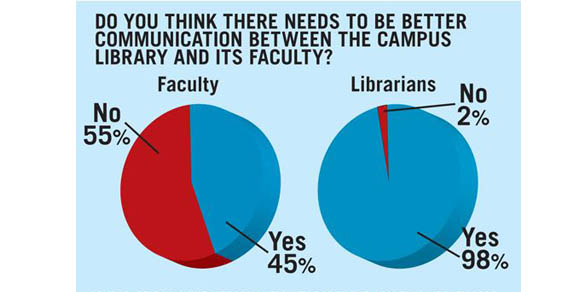
A new nationwide study by Library Journal, in partnership with Gale, examines faculty and academic librarian perceptions of the services offered by academic libraries, and the results are mixed. Nearly nine out of ten faculty (87%) feels that the academic library is important for providing resources for their own and their students’ research. However, academic librarians and faculty had different views on what services are most important and whether communication is adequate between faculty and librarians.
As far as services go, librarians and faculty do agree that the central function of academic libraries is information literacy instruction and research consultation for students. Yet librarians tended to rate their achievement in these areas much higher than faculty did. On the other hand, faculty are more likely to rate librarians higher in terms of stretch services. Well over half (61%) of faculty, for example, rated repository services as very important or essential, compared to just half of librarians. Faculty also rated services such as text and data mining, and research grant management, higher than librarians did.
Communication seems to be the biggest barrier to faculty and academic librarians seeing eye to eye, though. Essentially all academic librarians in the study (98%) thought there could be better communication between the two parties, compared to less than half (45%) of faculty surveyed who felt the same. Busy schedules and a lack of easy ways to foster in-person contact were the most cited reasons for a lack of communication. Over a quarter (27%) of faculty simply felt that there was “no need” to communicate with librarians.
Results from this survey seem to indicate that libraries and their services are still perceived as very important to academic institutions. The challenges that academic libraries will face, though, appear to be balancing the services needed by all campus stakeholders, including students, faculty, and graduate students, while forging effective methods of communication in busy and technology-saturated environments.
Note: This post is part of our series, “The Weekly Number.” In this series, we highlight statistics that help tell the story of the 21st-century library.